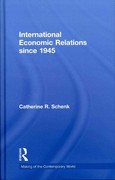Part 2: Check Your Understanding - Use the article below to answer the following questions . In the early 1980s the United States endured one of the worst economic downturns the nation faced since the great depression . Economists often focus on two main causes of the recessions , (1) the oil crisis of 1979 which dramatically increased energy prices and (2) the macroeconomic policy decisions made throughout the 1980s and 70s . During this time period many economists believed that there was a trade -off between inflation and unemployment . as depicted by the Phillips curve . While the data and policy outcomes initially appeared to support this ides , by the late 1970s when the economy experienced higher inflation and higher unemployment simultaneously . it was clear that this tradeoff ceased to exist in the long run . Paul Volcker became Chairman of the Federal Reserve in in August 1979 . In contrast with previous Fed policies that vacillated between focusing on inflation and unemployment . his main priority was to get inflation under control . To achieve the desired disinflation , Volcker implemented contractionary monetary p policies that led to a sharp increase in interest rates . As a result . inflation decreased dramatically . from about 13 % in 1080 to less than 3% in 1983 . However , these contractionary policies came at a sharp short -run cost as the unemployment rate surged from 7% to about 10 % over the same period - Volcker argued that once the public believed that the Fed was no longer going to tolerate inflation that inflationary expectations would quickly decrease . allowing the economy to swiftly recover and unemployment to fall . The data seem to support Volcker's policies , as the early 1080s experienced a painful recession but then a quick recovery followed and in the decades since inflation hasn't come close to e to returning to 1070s levels and unemployment has mostly remained low . 8. Explain why stagflation is uniquely difficult for policymakers to address The article suggests that the Federal Reserve sought disinflation . What is the difference between disinflation and deflation ? 10. How did Paul Volcker's monetary policy affect inflationary expectations ? Explain how this eventually helped the economy 11. Use data above to draw the Phillips curve in 1980 with the economy facing stagflation . Label this point "A" 12 . Show the short -run results of Chairman Volcker's leadership on the Phillips curve . Label this point of short -run equilibrium point "B", and indicate new inflation and unemployment rates using data from the article 13 . Show the long -run results of the contractionary policy once inflationary expectations adjust to a new lower rate of inflation . Label this point "C"







